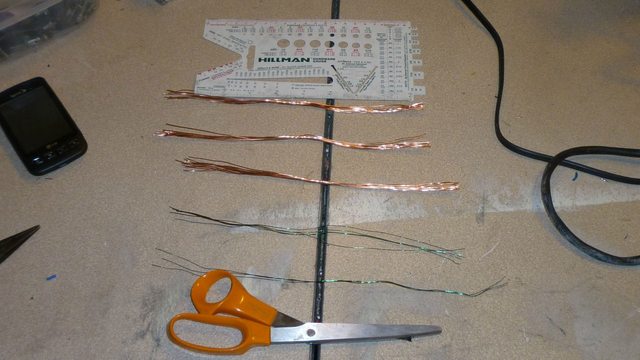auraslip
10 MW
- Joined
- Mar 5, 2010
- Messages
- 3,535
For those who have, or tried, to upgrade the phase cables in our DD hubs to 12awg understands the frustration of trying to cram them and the halls + temp sensor wires down the axle.
John in CR has done it with magnet wire instead, and it seems like an easier way.
Seems like a much better way to do it! My question is, what is the best magnet wire to use for this and what is the easiest way to remove the varnish from the wire?
John in CR has done it with magnet wire instead, and it seems like an easier way.
Re: 9c phase wire replacement...help
Postby John in CR » Wed Dec 01, 2010 8:00 pm
"...while pulling the 3rd phase wire through"...There's your problem. The entire wiring harness needs to go through at once, and it should be enclosed in a protective sheath.
I finally got around to mine today. I used magnet wire, 17 strands of 24ga per phase, so a bit larger than 12ga. I also included an extra pair for adding a temp sensor later. I only twisted only the ends together of each 17 strand group, so the phases are separated at the ends. Then I wrapped the entire bundle of 53 strands of magnet wire plus the 5 hall sensor wires in a single layer of electrical tape, and covered that in shrink wrap. I didn't have enough shrink wrap and didn't fully trust it as a single layer, so right or wrong I used that layer of electrical tape.
I staggered the phase wire ends so the end of my bundle was tapered. I also bent them before feeding into the axle, and the whole thing went through quite easily and I didn't use any lubrication. Both of these were intended to make getting the bundle through the 90° bend easier. It worked quite well, since I was just testing before deciding on a lubricant and it came through easy enough to forgo it.
My 9C is 9 strands by 7 turns of what appears to be 24ga, so even my 17 strand phase wires is overkill IMHO for that short run out of the axle. OTOH the 16ga (maybe smaller) phase wires the motor came with are totally unacceptable.
John
Regarding replacement wires, the one I did with magnet wire was a dream, because it was so easy. The only issue was getting the varnish off the ends easily and cleanly for electrically joining all strands. I feel comfortable with the 3 layers of insulation that take up very little cross sectional area. The high temp varnish on the magnet wire insulates the 3 phases from each other, and is the innermost layer of protection. Then I did a single wrap of electrical tape to easily create a nice neat round bundle including the hall wires, and because I don't fully trust shrink wrap as the only protection against chaffing of a hub motor wiring harness. The outer cover of the harness is shrink wrap. This permits low strand count for better copper fill, but since it's not twisted the cable remains quite flexible.
If someone knows a reliable way to get that varnish off the ends, please share it. That's the only issue keeping me from enthusiastic recommendation.
Seems like a much better way to do it! My question is, what is the best magnet wire to use for this and what is the easiest way to remove the varnish from the wire?




